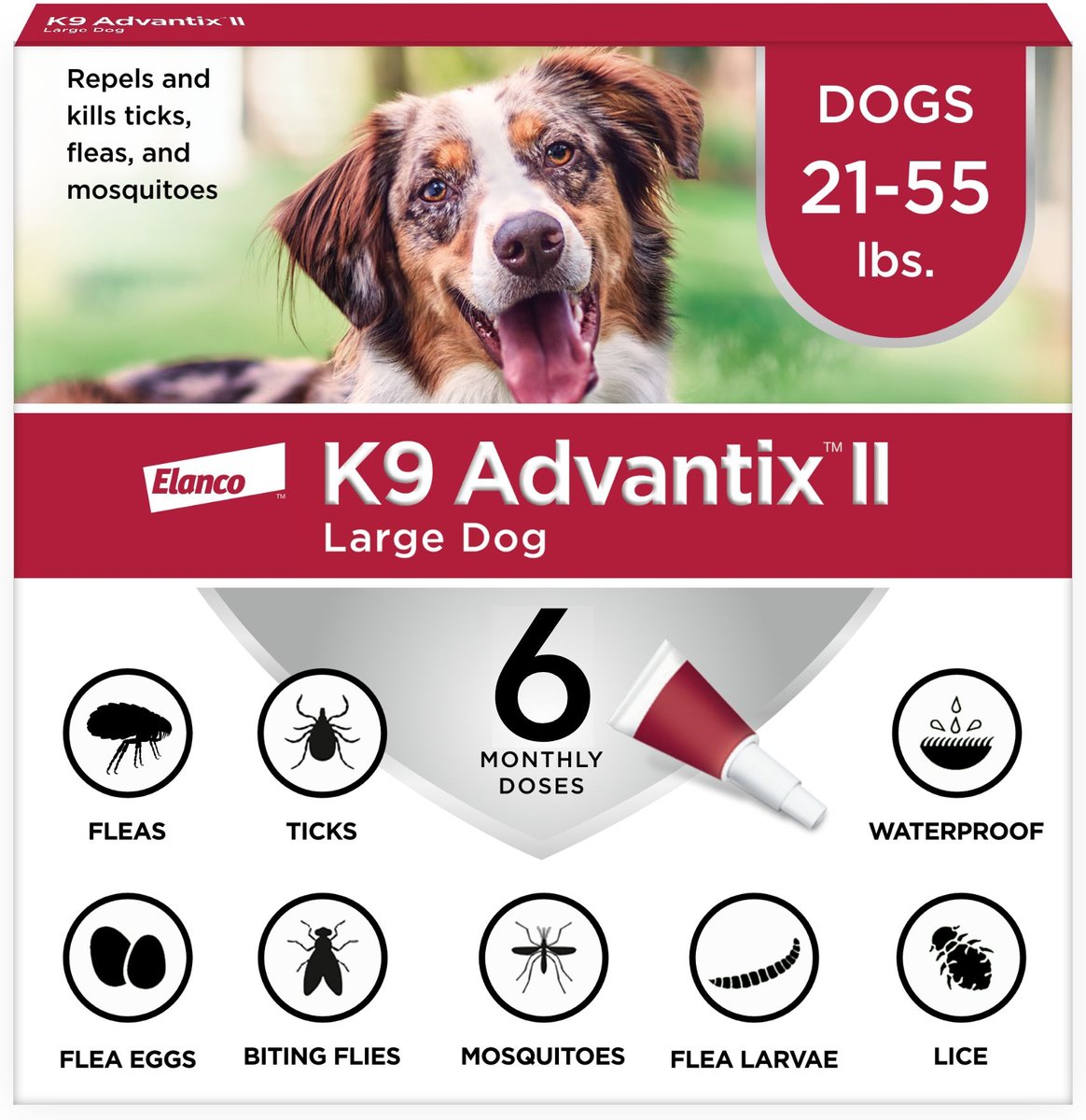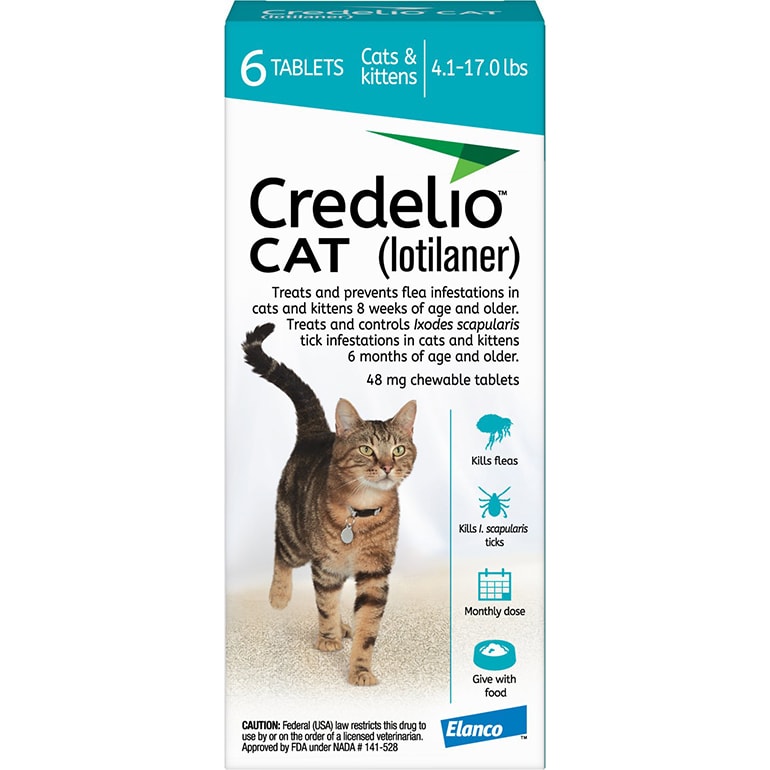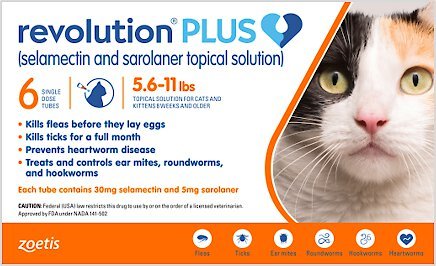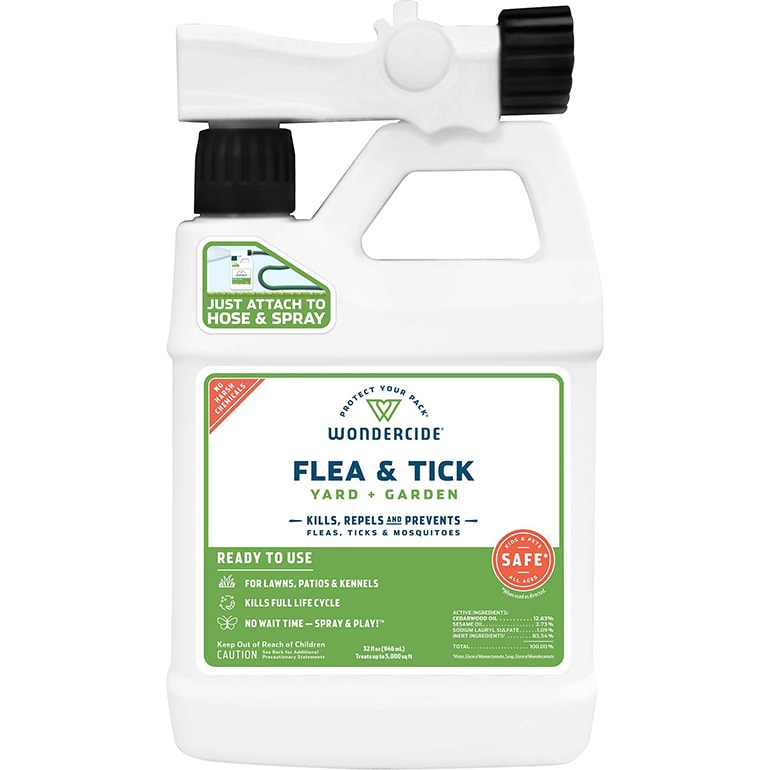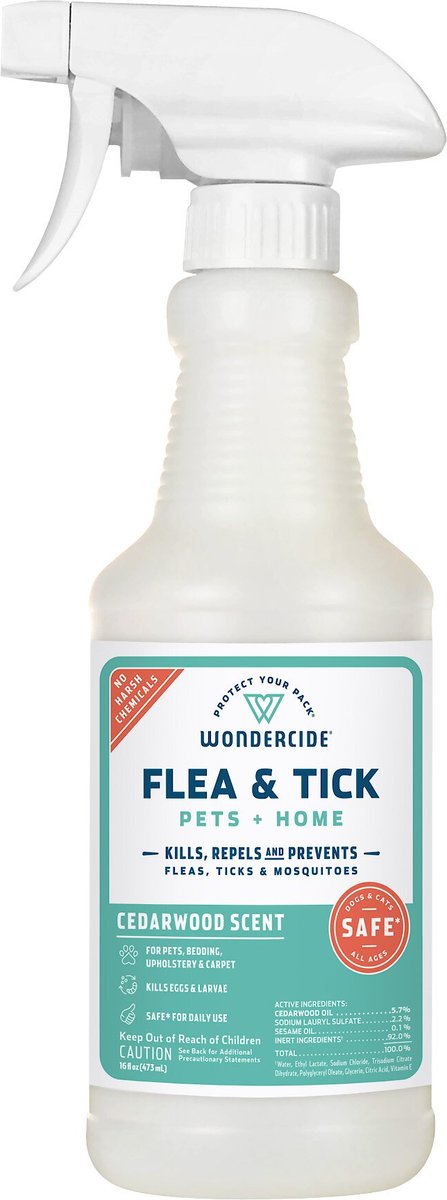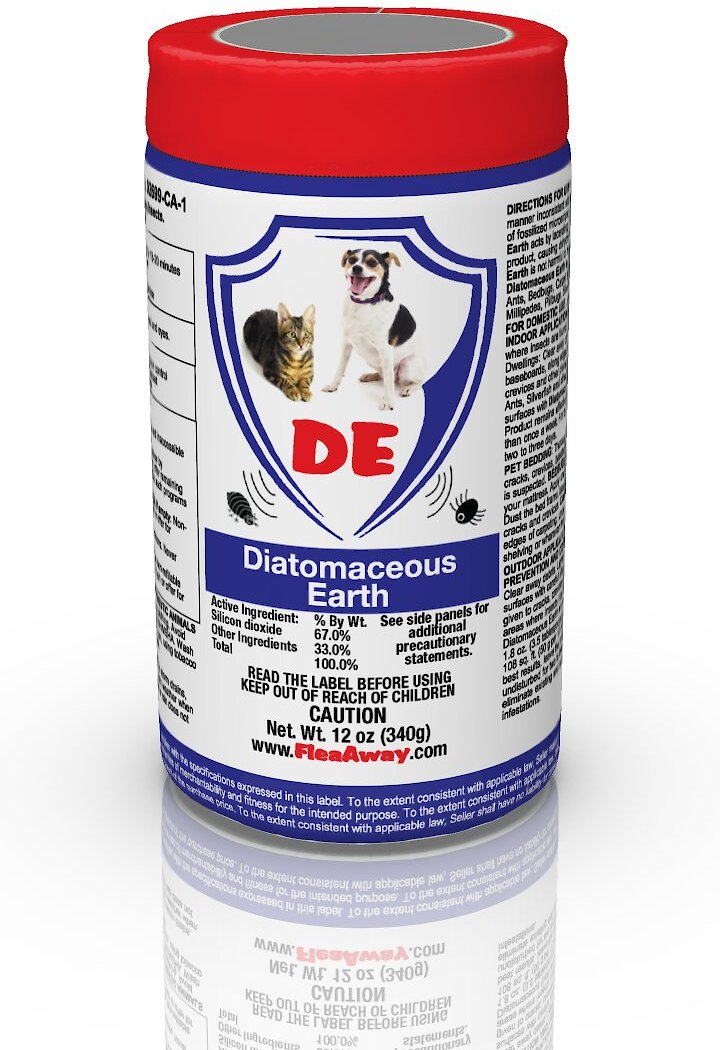We want our pets to always be happy and healthy, but hey, fleas happen—and in many areas of the country, so to do ticks. It doesn't make you a "bad" parent if your pet gets a case of fleas or picks up a tick on walk. It's all about where you go from there.
Watching your pet scratching, biting and chewing their fur to relieve the itch and creepy-crawly sensation is distressing for us, totally miserable for them and getting rid of these pests for the long haul can be frustrating. Compounding the problem are other illnesses (some severe) that are associated with flea and tick bites on animals such as cats and dogs.
To help you diagnose the problem and get a handle on the best solutions (hint: likely to be a battle fought on four fronts, including bathing with a flea shampoo, flea combing frequently and killing any pesky fleas found; cleaning indoor and outdoor spaces, and asking your vet about treatment options, which can include flea collars, topical liquid applicants and pills), we've broken this flea and tick guide into sections. Use the buttons below to jump to the most relevant topic, but do know that you will learn something useful from each section!
Click on a button to jump to each section:
Flea and Tick Myths
True or False?
Flip each card for the answer.
They're only a problem during "flea season."
False. Fleas can survive and reproduce all year long in many climates.
Urban pets don’t need flea and tick prevention.
False. Fleas are equal-opportunity parasites found everywhere.
Fleas and ticks also bite humans.
True. You're not their meal of choice, but fleas and ticks do bite humans.
Flea and Tick 101

Fleas
- Fleas are small insects about 1 to 2 mm in length.
- Female fleas lay eggs that can remain in a dormant stage for up to two years, emerging as an adult flea once it senses that there is a delicious host nearby (using signals such as vibration and carbon dioxide levels). Once female fleas get a blood meal, they begin to lay eggs and so the cycle starts again. This lifecycle can take as little as two to three weeks but can last up to six months.
- Adult fleas live in the coat of dogs, cats and other animals and feed on their blood.
- Fleas can cause flea allergy dermatitis, an allergic reaction that can lead to constant scratching, severe itching and even hair loss.
- Fleas are also at home in bedding, furniture, rugs and dark, hidden spots.
- To rid your pets and household from fleas, you must break this cycle using tools and strategies that range from mechanical to chemical.
Ticks
- Ticks are parasites that feed by latching on to an animal host, embedding their mouthparts into the host’s skin and sucking its blood. This method of feeding makes ticks the perfect vectors (organisms that harbor and transmit disease) for a variety of pathogenic agents.
- Ticks are responsible for at least 10 different known diseases in humans in the U.S.
- It can take up to three years to complete their full life cycle.
- Ticks find their hosts by detecting animals' breath and body odors or by sensing body heat, moisture, and vibrations.
- When a host brushes the spot where a tick is waiting, it quickly climbs aboard.
- Ticks transmit pathogens that cause disease through the process of feeding.
- Ticks can transmit deadly diseases such as Lyme disease and Rocky Mountain spotted fever.
Dog Flea & Tick

When it comes to dogs and fleas and ticks, the results of infestations can range from misery to downright dangerous. Fleas and ticks are equal opportunity spoilers causing issues for dogs of any size and age, and regardless of location.
Dogs often get infested with fleas through contact with other animals or contact with fleas in the environment.
The flea’s bite can cause itching for the host, but for a sensitive or flea-allergic animal, this itching can be quite severe. It can lead to severe scratching and chewing that causes hair loss, inflammation and secondary skin infections. Some pets can be hypersensitive to the flea's saliva and will itch all over from the bite of even a single flea.
Ticks can cause a range of illnesses including Lyme Disease. In addition to preventative treatments you should also be checking your dogs for ticks regularly. Ticks prefer to stay close to the head, neck, feet and ears, so focus on these areas the most.
Let's Review:
- Any age dog in any part of the country is susceptible to flea infestation.
- While most active in summer and again in fall, fleas can hang out 365 looking for a meal.
- Treat dogs and cats for fleas all year long.
- Tick bites on dogs may be hard to detect. Signs of tickborne disease may not appear for 7 to 21 days (or longer!) after a tick bite. Watch your dog closely for changes in behavior or appetite if you suspect that your pet has been bitten by a tick. Consult your vet right away.
Flea and tick preventatives kill fleas that come in contact with your dog, preventing your pup from bringing them home in the first place. There are several options out there, from flea collars to topical liquid applicants and pills.
If your dog already has fleas, these preventatives will still kill the fleas, but you may need to take more aggressive action, like a prescription preventative. You can also use a flea shampoo or a fast-acting chemical treatment, such as a flea pill that kills the fleas on your dog within hours. For any and all preventatives it vital to ask your dog’s veterinarian for recommendations.
When it comes to ticks, you will have a range of options here, too. From preventatives and dog shampoos to collars, you can work to stay ahead of issues. Of course, you also need to be checking your dogs for ticks anytime—but especially after a walk in the woods. If you do find a tick attached to your dog, removal should be done immediately and carefully, making sure to get all parts of the tick’s body removed from the skin.
Most Common Flea and Tick Treatments for Dogs
K9 Advantix II Flea & Tick Spot Treatment for Dogs
Bravecto Soft Chews for Dog
Frequently Asked Questions About Dogs and Fleas
More on How Fleas and Ticks Impact Dogs
Flea Facts to Chew On: Did You Know?
50
Number of eggs one female flea can lay per day.
200
Fleas can jump up to 7" high X 13" horizontally or 200 X their body length.
15
A female flea can consume 15 times its body weight (in blood) on a daily basis.
Cat Flea & Tick

The misery that an infestation of and bites by fleas on your cat is distressing to be sure, but flea bites can also lead to serious medical problems, including flea allergy dermatitis to tapeworms.
Fleas can also be vectors for a blood born parasite called Mycoplasma haemofe a bacterium that can cause anemia, fever and severe illness.
Fleas are not just a nuisance and should be taken seriously.
It's important to jump on the problem when you first see sign of fleas on your cat. Ridding your cat of fleas is similar to the steps you would take for dogs:
- Flea and tick collars for cats help kill fleas, flea eggs, flea larvae and ticks immediately as well as repel fleas.
- Topicals such as liquid solutions are applied to the skin.
- Pills and chewables are fast-acting and provide symptom relief.
- Baths with flea shampoo (yes, it is a challenge to bathe a cat, but here you gotta be boss).
Next, short-circuit the lifecycle of fleas in your environment (see below). Finally, give your cat time to rest and recover. That's a lot of stress and impact for a little one.
Let's Review
- Indoor cats, as well as those who enjoy the outdoors, can get fleas.
- Cats can often be silent sufferers. If they are acting differently (very quiet, hiding, lethargic, mega-scratching) it could be due to a flea infestation.
- Fleas are very small— only about 1/12 – 1/16” long— and can be hard to spot. Look for clues such as light-colored specks in your pet’s coat or on their bedding (flea eggs), or black, pepper-like black in their coat or on their bedding (flea feces).
Regarding ticks, while ticks are not as great an issue for cats as they are for dogs, they can become a host. Lyme disease is extremely unlikely to occur in cats, though, and as of 2018 has not been seen outside of a controlled laboratory setting.
There are preventatives available, so check with your vet. Never use flea and tick products meant for your dog on your cat as they can be toxic, possibly causing your cat to have seizures.
Check out this tutorial on how to remove a tick from a cat.
Most Common Flea and Tick Treatments for Cats
Credelio Chewable Tablets for Cats
Frontline Plus Flea & Tick Spot Treatment for Cats
Revolution Plus Topical Solution for Cats
Frequently Asked Questions About Cats and Fleas
More on How Fleas and Ticks Impact Cats
More Flea Facts: Numbers Don't Lie!
4
Fleas have 4 life stages: egg, larva, pupa and (no one's favorite) biting adult.
100
A flea can live more than 100 days without a blood meal.
2000
It's true. A female flea can lay 2K+ eggs in her lifetime.
Fleas and Ticks in the Yard and Garden

Fleas and ticks are plenty happy breeding and living in your lawn and yard where they can easily hitch a ride on your pet (or you) and then be brought inside the house where, at least for fleas, they're even happier. Here are steps you can take:
- Treat your lawn. Ask at your local garden center for recommendations for pet-safe, insect-control lawn care products.
- Build a barrier. Remove all leaf litter, brush and plantings for 6 to 18 inches (wider barriers are better) from the outside of the house to create a perimeter that’s unfriendly to fleas.
- Mow high (but not too high). Overly long grass gives fleas places to hide; grass that’s too short won’t be attractive to insects that prey on fleas.
- Let the sunshine in. Prune trees and shrubs by removing low branches and thick canopies to allow sunlight beneath.
- Clear clutter. Remove places throughout the yard under which fleas can hide and lay eggs. Piles of lumber, old garden pots and bagged materials are hot spots.
Let's Review:
- Quick way to tell if you have fleas in your yard? Don a pair of tall white socks and take a walk in areas your pets frequent most. If there are fleas, you will see them on your socks (which you will then bag up and toss out!).
- Clear all leaf litter, brush and plantings for 6 to 18 inches (wider barriers are better) from the outside of the house.
- A thick thatch layer (matted organic material at base of grass plants) gives fleas, their eggs and their larvae a happy place to hide. Remove thatch.
- If an area is heavily infested (such as around a dog house), you might need to call in a professional. Ask for specific information about pet-safe treatments.
Effective Flea and Tick Solutions for Your Yard
Vet's Best Outdoor Flea & Tick Spray
More on Outdoor Prevention and Treatment
Frequently Asked Questions About Outdoor Prevention and Treatment
True or False?
Ticks, like fleas, are insects.
No. Ticks are arachnids, or relatives of spiders, scorpions and mites.
Ticks are champion jumpers.
No. Ticks climb plants and hang out, latching onto a passing human or animal.
I don't see any more fleas. I'm good?
Maybe, maybe not. Fleas in the pupae stage remain dormant for up to 2 years.
Fleas Inside the House

Killing the fleas on your dog is just one part of the problem. You also need to rid your home of fleas in all stages of their life. Five percent of fleas live in the environment as an adult while a shocking 95 percent of fleas live as eggs, larvae or pupae happily biding their time in your home or yard. So, if you see fleas on your pet they are probably just the tip of the iceberg.
- Wash all dog beds and soft dog toys in hot, soapy water. Repeat this weekly.
- Wash bedding, blankets, throws or throw rugs where your dog likes to sleep with hot water.
- Vacuum all carpets, hardwood and other flooring, curtains and upholstered furniture. Use crevice tools! Toss vacuum bag immediately in an outside garbage bin.
- Apply a flea control spray or fogger that will treat all stages of fleas. Or call a local exterminator.
- Eradicate fleas from your yard (see below) so they're not bringing more of them in. Vacuum car seats and interior.
- Treat your dog and any other pets with a monthly preventative.
- During "flea season," try to restrict your dog from mixing with strange dogs, and be sure his puppy playmates are free of fleas.
Let's Review:
- Pets are hosts. You cannot rid your house of fleas without first ridding your pets of them. (See above.)
- Fleas mostly hang out where your pets sleep. Wash bedding (pet beds, blankets and your bedding, too, if they share your space) in hot, soapy water. Do this weekly to interrupt the flea life cycle.
- Fleas like dark places. Vacuum under beds and other furniture. Use corner attachments for baseboards, heat vents, floor cracks, carpet edges and room corners.
- This process requires patience. It can take as long as three to four months to get rid of an infestation. That's how long it takes for all of the fleas in your home to go through their life stages.
Effective Flea and Tick Solutions for Your Home
Frequently Asked Questions About Fleas Inside the House
More on Indoor Flea Prevention and Treatment
Fleas and ticks are no one's favorite part of being a pet parent, but solutions and treatments do exist and are typically effective. The keys are prevention, quick and effective treatment and staying ahead of the problem with consistent monitoring and mitigation. Do this, and the little biting buggers will find that your house is no home-sweet-home for them.
There are no “stupid” questions when it comes to your pet’s health. If you suspect your pet is sick, please call your vet immediately. For diet, wellness and health related questions, always consult your regular veterinarian when possible, as they can make the best recommendations for your pet. (If you need help finding a vet near you, Connect With a Vet online.)
The content on this blog is provided for informational use only and does not constitute professional veterinary advice, diagnosis or treatment.
More on flea and tick:
Share:

